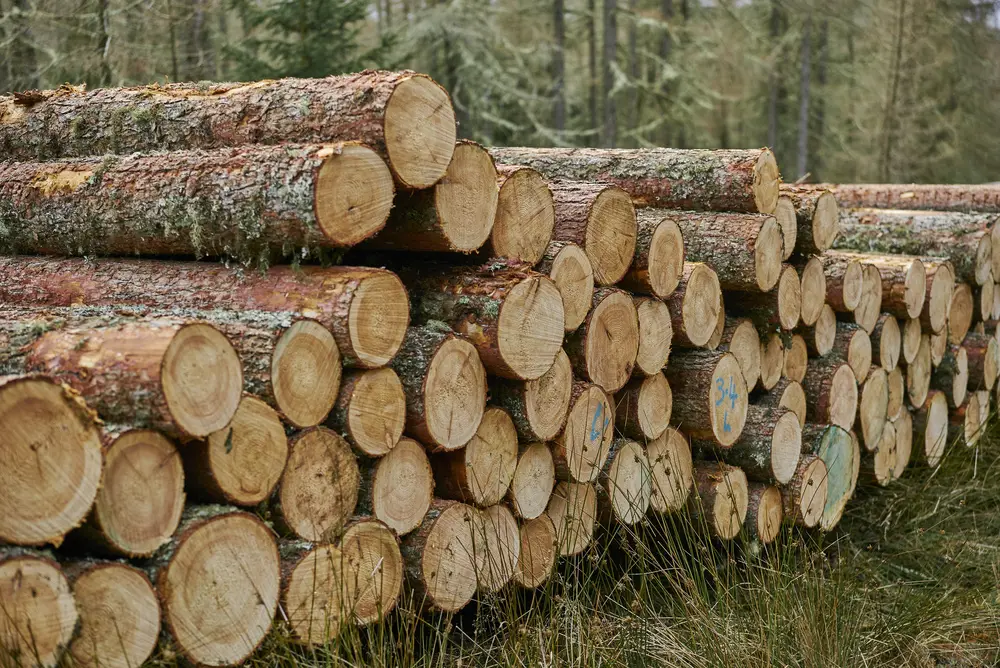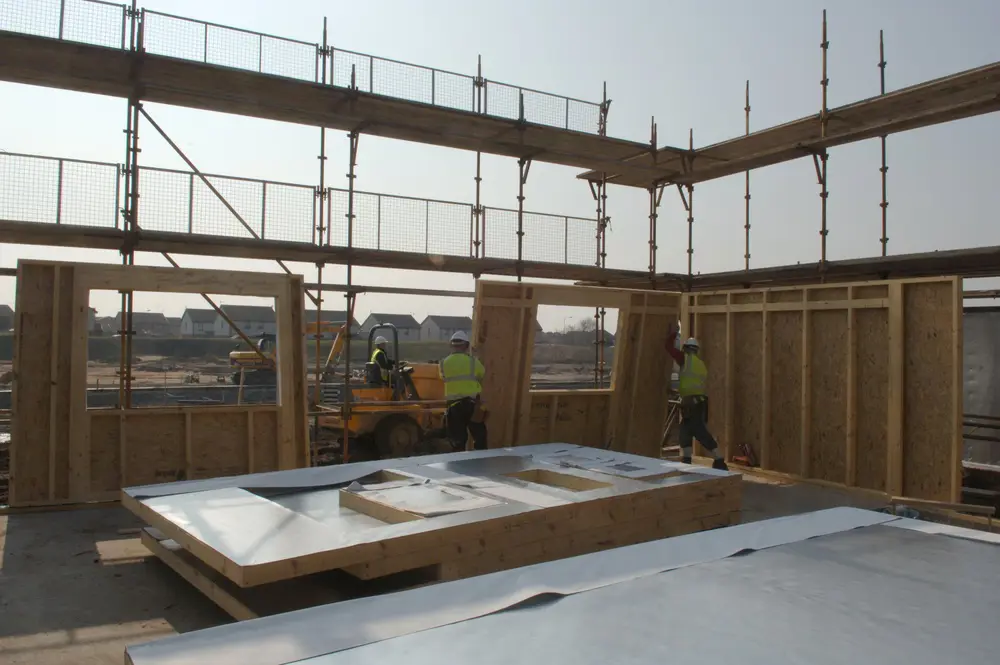Timber and the Climate
Timber and the Climate
It can, at first, seem strange that felling trees for timber could help mitigate the effects of the Climate Emergency. Trees absorb CO2 emissions and produce oxygen – surely we need more of them? Yes, we absolutely do need more trees, but what is crucial to understand is what a felled tree contributes to a sustainable planet.
Locking up CO2
Throughout the life of a tree it will absorb CO2. No matter the species, whether it grows quickly or slowly, it will produce oxygen and absorb CO2. If that tree is felled when mature (anywhere from 40 to 100 years for conifers, and considerably more for broadleaves) the carbon it absorbed during its life is then locked into the timber. The carbon does not pour out when a tree is felled. And this is the key reason why harvesting trees for timber is essential to create a greener world.
The felled trees go to a sawmill and is machined into useable lengths of timber. Typically in Scotland, logs of good quality (straight, free of defects) become construction-grade timber. Lower quality wood might become pallets or maybe fence posts. Branches and smaller round stock could become manufactured boards like OSB. This means that most of the tree can then serve a useful purpose, like building a house.

Building a house means the wood is in long term storage, and keeping that carbon locked up for potentially hundreds of years. It also means that same house isn’t using steel or concrete (at least for parts of it). These materials are not renewable and are more energy intensive to make. Using timber means less harmful materials are used, creating a secondary benefit.
And it isn't just construction. Research worldwide is showing myriad new uses for trees that can replace harmful materials in products we have come to rely on. Things like paints and medicines, even materials in mobile phone screens. These uses might still be in the development phase, but the more uses we can find for wood, the more sustainable our world can be.
But what happens to the forest?
Once an area has been felled, that isn’t the end. As trees grow so slowly, it can be difficult to see progress taking place, but after felling, the same ground will be re-established with new trees. Mostly, a felled area needs some time to rest before re-planting, much like a farmer may rest fields for a season to let the soil regenerate. Establishing new forests and woods is often done by planting trees by hand, but it can also be accomplished by natural regeneration. Regardless of method, growing new trees on the same ground allows a new generation of trees to begin absorbing carbon.
This cycle means there are always trees growing and absorbing CO2. And it means we can provide a sustainable material for use throughout our society. The felling of a forest can appear devastating, and it can affect animals and birds (though we take great care to minimise our impact and work with other organisations like NatureScot to prevent damage as far as possible), but ultimately it is necessary to help our society move to a greener future.
Timber in the UK
Most years we bring around 3 million tonnes of timber to market, which contains roughly 3 million tonnes of CO2. That gives us the chance to establish new trees which will grow and absorb even more emissions. It also gives us the chance to replant with mixed species which will be more resilient to the effects of a changing climate. We also bring trees to new areas every year, overall planting more trees than we harvest.

Currently, almost 80% of timber in the UK is imported from abroad. This percentage is second in the world only to China. The UK also has one of the lowest proportions of tree coverage in Europe. These two statistics make it clear that we in the UK use a lot of timber, we don't currently produce nearly enough ourselves, and despite that, we still have far less woodland cover than other nearby countries. So what does this actually mean?
Simply, the UK needs to grow more trees. We need more productive forests to supply sustainable materials for the future, and we need more native and mixed forests for nature. At FLS, we are not advocating that every tree should be felled for timber - far from it. We are saying that harvesting forests is necessary to make our modern way of life sustainable. And that we should plant more trees now, of every type, to secure a green future.